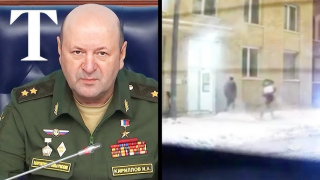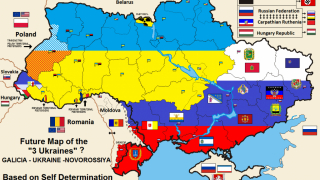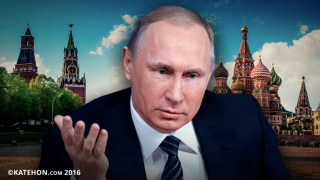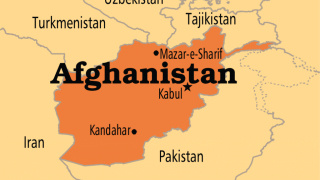Vietnam, a special breed of Asian tiger
Vietnam has always been a special country. A socialist state, it preferred the Soviet Union to China which was much closer in terms of territory, and throughout its history it has had to confront the ambitions of several superpowers simultaneously. “It is an Asian tiger of the new wave”, which has not abandoned its socialist line and at the same time is not blindly copying the Chinese experience. A once poor and war-torn country that is carefully forging its own distinctive path to regional power status. And - we can already talk about it now - one of the most likely “pillars” of a multipolar world in Southeast Asia.
With the launch of the special military operation, the “multipolar world” is no longer a merely speculative concept: finding the future lawmakers of this world to come here and now becomes a vital task for Russia. And Russian Foreign Minister Sergei Lavrov's recent visit to Vietnam seems to indicate that our country's political leadership understands this task.
Vietnam's peculiar path: between Scylla and Charybdis
Vietnam's path to independence has been very difficult. At various times they had to defend their independence from the French, Japanese and British, overcome internal contradictions and defend their right to identity in the face of the United States and China. With the collapse of the colonial system and the redistribution of influence in Southeast Asia, Vietnam faced tough challenges that taught the country's leadership to pursue a multi-sectoral policy combined with self-reliance.
The two key conflicts that defined Vietnam's foreign policy in the second half of the 20th century were the Vietnam War proper and Vietnam's war against China and the Khmer Rouge.
The former, which lasted 20 years (1955-1975), was fought by North Vietnam against the United States and the old colonial empires, France and Britain. For Vietnam, this war was complicated by the fact that, in addition to foreign invaders, it also had to fight “its own” (South Vietnam) and the allies often became “cold” to their fight because of their geopolitical and situational obstacles. For example, after the break with the USSR, China drastically reduced its assistance to Vietnam, over whose territory it already had claims. Cambodia also repeatedly changed sides in this conflict.
The USSR turned out to be a true ally of Vietnam in that war, and the Vietnamese people remember and appreciate this help to this day. Sergey Lavrov said the same: “We see how well and deeply the Vietnamese people remember our country's contribution to the territorial integrity and unity of the Vietnamese people”.
The second war, also known as the Sino-Vietnamese War (1979), was triggered by China's dissatisfaction with Vietnam's military action against the Khmer Rouge government in Cambodia and some territorial claims. China retains some of them to this day. In this unique conflict (also referred to as the “first socialist war”), China's actions were paradoxically supported by the United States. Although relations between Vietnam and the PRC have greatly improved since the end of the Cold War, Vietnam is still very cautious. In 2016, for example, Vietnam deployed its missile systems on some islands in the South China Sea that China still considers its own.
Both wars showed the indestructible spirit of the Vietnamese people, their courageous intention to lead their own, independent line. In short, between the American Scylla and the Chinese Charybdis, socialist Vietnam has firmly and cautiously set out on the road to becoming a distinct regional power, with its own interests and views on the balance of power in the region. Vietnam's commitment to this direction is particularly evident in the “three no's” doctrine, to which the CPV [1] continues to adhere formally to this day:
- Do not make military alliances, do not be military allies of any country.
- Do not allow foreign countries to establish military bases on Vietnamese territory.
- Do not ally with any country against a third country.
The current global situation leading to a multipolar world poses new challenges to the Vietnamese people, the country's political leadership and established geopolitical doctrines.
The “Vietnamese economic miracle”, or socialism with Vietnamese characteristics
In the 1990s, Vietnam began to implement gradual market reforms while staying the course of possible greater economic independence and formal socialist ideology under the one-party system. The result was not long in coming, and Vietnam soon found itself in the club of the “New Asian Tigers” along with Malaysia, Indonesia, the Philippines, and Thailand. The Vietnamese economy continues to grow at a rate of about 7 percent per year. Vietnam maintains its place as the leader in economic growth among ASEAN countries [2].
As with the other Second Wave Tigers, the key to Vietnam's rapid economic development has been demographic transition [3], cheap labour and the opening of markets to international trade. In addition, Vietnam is a country rich in many kinds of resources (including oil and gas), with enormous agricultural potential and vast marine resources. Vietnam's position on the map of international trade hubs is in many ways critical. But despite the sources of economic growth common to other tigers, Vietnam is a special breed among them.
In terms of world systems analysis, the fate of the “Asian tiger” is not exactly enviable. The country joins the global division of labour, offering its new specialization to the world economic system. In exchange for the opportunity to receive a share of global financial flows at its disposal, the country essentially gives up its economic sovereignty. Under modern conditions, this usually also means the loss of political sovereignty. This was the case with Japan and South Korea after World War II. But the “Tigers of the First Wave” acquired a relatively prestigious specialization: science, medicine and technological production. For the “New Tigers” such as Thailand or Indonesia, much “dirtier” work is now offered: crude agriculture and simple manufacturing (e.g., clothing). And despite good overall GDP or GNP figures, the inhabitants of these countries actually face poverty, low living standards, poor ecology and appalling working conditions every day.
Naturally, Vietnam could not afford to put economic growth before geopolitical autonomy. Therefore, it opted for a slightly different growth path.
Vietnam's economic structure is for all intents and purposes multi-economic. This allows it to develop harmoniously without falling into the usual “tiger” trap of overspecialization and to remain independent of the economic power of any other country.
In 2020, about 16 percent of Vietnam's economy was based on agriculture, 30.5 percent on industry and 26.2 percent on services. All sectors of the economy are developing relatively proportionally. Vietnamese exports are also diversified: about 27 percent of exports go to the United States, 17 percent to China, about 18 percent to developed Asian countries (Japan, South Korea) and so on. Export items are also extremely diverse: rice, coffee, elements of digital technology and equipment, cars assembled under foreign license, clothing, and even nuclear reactors (about 6.7 percent of all exports). All this rules out the possibility of imposing conditions on Vietnam by relying on markets: Vietnam can always switch to another buyer of its goods at its discretion.
It is precisely Vietnam's multi-sector economy that protects its economic sovereignty. And it is precisely this multivector approach that allowed Vietnam to explicitly reject economic sanctions against Russia after the start of Special Military Operation. With this decision, Vietnam demonstrated its true sovereignty in economic affairs and supported our countries' aspirations for a common multipolar world.
At a press conference following his talks with Vietnamese Foreign Minister Bui Thanh Son on July 6, Sergey Lavrov said that “Vietnamese businesses perfectly see their interest, their advantage in the further development of economic and investment relations with Russia. We have very close and structured cooperation in the energy sector. There are joint companies in the field of production and supply of hydrocarbons to international markets, and today we talked about the fact that these companies will continue their work”.
According to the diplomat, trade turnover between Russia and Vietnam grew by a quarter last year, and this trend continues even in the face of sanctions.
Vietnam's three paths
Given the multidirectional caution of Vietnam's foreign policy, it can be said that Vietnam's future is still uncertain. However, in general, there are three obvious scenarios. Let us consider them separately.
The first possible path for Vietnam is the “Chinese” path. Despite the huge number of contradictions between the countries and the obvious distrust of Vietnamese elites, the countries are still united by common economic interests and opposition to U.S. influence in the Pacific and Southeast. As early as 2002, Jiang Zemin paid an official visit to Vietnam, where he signed numerous agreements to expand trade and cooperation, and since the 1990s, trade between the countries has grown exponentially.
Of course, China would like to see this “Sino-Vietnamese tandem” as a tool for its own geopolitical plans. Therefore, it is most likely to continue to view Vietnam as its “sphere of influence” rather than an equal partner. In any case, the “Chinese” path to Vietnam's foreign policy would prove very beneficial to Russia and dangerous to Washington.
The second way for Vietnam, the “American way”, would be a great embarrassment for Russia, a blow to China, and most likely the beginning of the end of Vietnam's dream of independence. American geopolitical analysts have long suggested that an alliance between Vietnam and the United States is the only salvation for the country from the ambitions of Chinese imperialism. Of course, such an alliance would hardly be openly accepted by the current CPV leadership - but aren't Americans used to changing governments on such occasions? The interest of China and Russia - to avoid the “American scenario” - requires us to work positively on diplomacy, make favourable offers and - if necessary - directly safeguard Vietnamese independence. China seems to be ready for such actions even in spite of its own interests. An independent (even if unwanted) country “on our side” is still much better than an American puppet.
Vietnam's unique path has also given the country a third option: the “Vietnamese way”, which implies complete geopolitical independence and the search for new friends around the world. Today's world is far from the world of Fukushima's “end of history”, so India, Latin American countries, some Southeast Asian elites and so on also have their own geopolitical interests. And among them Vietnam could find reliable, useful and strong friends. And, of course, our country is not the last of these friends. Sergei Lavrov's diplomatic visit to Vietnam on July 5-6 this year shows that this possibility of a strong and constructive friendship is being considered by both sides.
It is important to note that since 2016. Vietnam is a member of the EAEU free trade area. It was the first country to join this cooperation format.
The Vietnamese people have shed much blood and sweat for their independent and distinctive future. It seems that every Russian citizen should understand and stand by them, especially now that our country is in a “besieged fortress” situation. And on the basis of this understanding we must simply help and support each other, even if at first the starting point of this cooperation is mercenary interest. It is important to show that two noteworthy nations, already present in the modern world, can stand on their own without any “civilized world”.
[1] Communist Party of Vietnam
[2] Association of Southeast Asian Nations, an international regional regulatory organization.
[3] Demographic transition is a rapidly growing demographic phenomenon associated with urbanization and declining infant mortality.
Traduzione di Costantino Ceoldo













